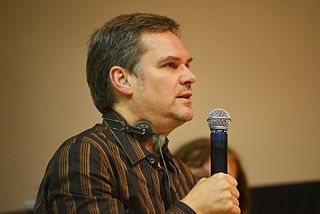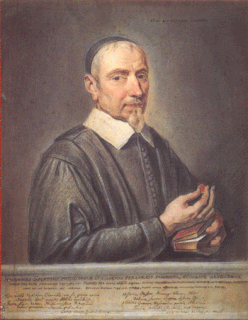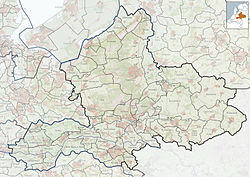
Nijmegen is the largest city in the Dutch province of Gelderland, on the Waal river close to the German border.

Gelderland, also known as Guelders in English, is a province of the Netherlands, occupying the centre-east of the country. With a total area of 5,136 km2 (1,983 sq mi) of which 173 km2 (67 sq mi) is water, it is the largest province of the Netherlands by land area, and second by total area. Gelderland shares borders with six other provinces and the German state of North Rhine-Westphalia.

The Bonnefanten Museum is a museum of fine art in Maastricht, Netherlands.

Ben van Berkel is a Dutch architect; founder and principal architect of the architectural practice UNStudio. With his studio he designed, among others, the Erasmus Bridge in Rotterdam, the Moebius House in the Netherlands, the Mercedes-Benz Museum in Stuttgart, Germany, Arnhem Central Station, the Singapore University of Architecture and Design, Raffles City in Hangzhou and numerous other buildings.
Corpus Speculorum Etruscorum is an international project with the goal to publish all existing Etruscan bronze mirrors. The first three volumes were published in 1981. A total of thirty-six fascicles has been produced.

Ruud van Empel is a Dutch photographer and visual artist.

Lique Schoot is a Dutch visual artist who is preoccupied with the self-portrait in a multidisciplinary way. She was educated at the Academy of Fine Arts in Arnhem (ArtEZ).

The Nijmegen Helmet is a Roman cavalry sports helmet from the first or second century AD. It was found around 1915 in a gravel bed on the left bank of the Waal river, near the Dutch city of Nijmegen. The helmet would have been worn by the élite Roman cavalry. The head portion of the helmet is made of iron, while the mask and diadem are of bronze or brass. The helmet has a neck-protecting projecting rim, overlaid with a thin bronze covering plated with silver. The diadem features two male and three female figures.

Rob Voerman is a Dutch graphic artist, sculptor and installation artist. His works generally show futuristic architectural constructions in a post-apocalyptic world full of destruction, explosions and the remains of conflict and catastrophe.

The Valkhof at Nijmegen is an oil painting by the Dutch Golden Age painter Aelbert Cuyp, likely painted between 1652 and 1654. It is now held in the Indianapolis Museum of Art.
Ellen Kooi, is a Dutch artist and photographer, who lives and works in Haarlem, the Netherlands. She is perhaps best known for her scenographic, theatrical imagery merging landscapes and figures–in the tradition of the city's landscape painters from the Dutch Golden Age.

Berend Strik is a Dutch visual artist working and living in Amsterdam.
The following is a timeline of the history of the municipality of Nijmegen, Netherlands.

Het Noordbrabants Museum is an art museum in 's-Hertogenbosch, Netherlands.

Ineke Hans is Dutch industrial designer.
Marijke Abels is a Dutch visual artist and instructor.

Annie Nicolette Zadoks Josephus Jitta was a Dutch numismatist and archaeologist.
Glenys Lloyd-Morgan was a British classical archaeologist. She was the main authority for research on Roman mirrors, particularly from Britain.

Harry van Kuyk was a Dutch graphic artist, visual artist, graphic designer and writer. In 1969 he developed a new technique for the graphic arts, the printed relief or "relief print", a print with an extreme relief.

Johannes Smith of Kettenis, known as Johannes Smetius, was a Dutch minister, collector and archaeologist, particularly known for his collection of Roman antiquities and his studies of the Roman past in the city of Nijmegen.

















